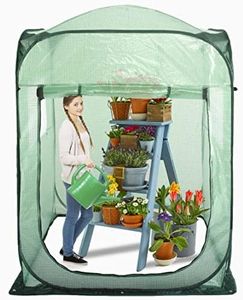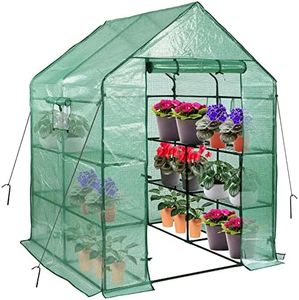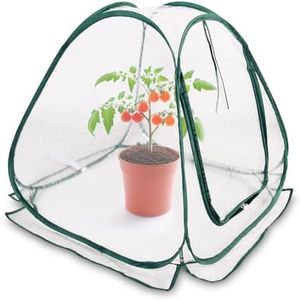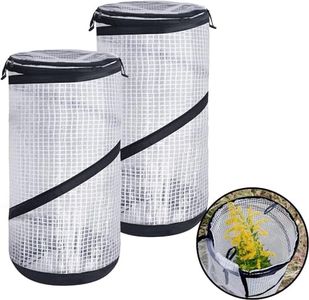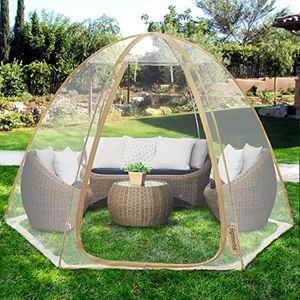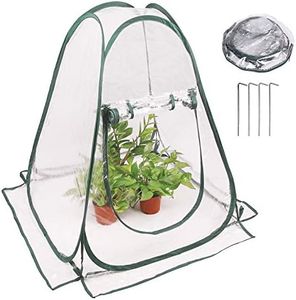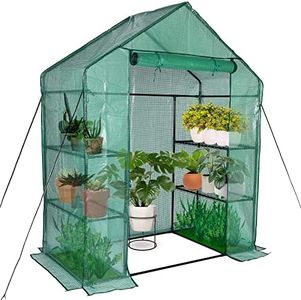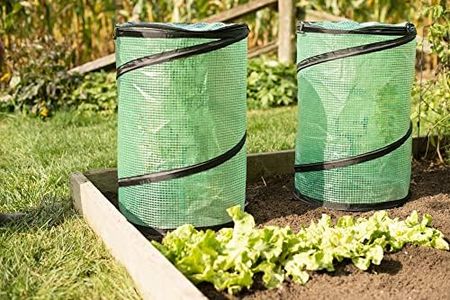We Use CookiesWe use cookies to enhance the security, performance,
functionality and for analytical and promotional activities. By continuing to browse this site you
are agreeing to our privacy policy
10 Best Pop Up Greenhouses
From leading brands and best sellers available on the web.Buying Guide for the Best Pop Up Greenhouses
Choosing the right pop-up greenhouse can make a big difference for your gardening experience, whether you're growing vegetables, flowers, or starting seedlings. Pop-up greenhouses are loved for their convenience—they're portable, quick to set up, and perfect for small spaces. To make the best choice, focus on the core features that match your growing needs, space, local climate, and how much you plan to use it throughout the year.Size and DimensionsSize refers to the overall height, width, and length of a pop-up greenhouse. This is important because it determines how many plants you can fit inside and what kind of plants you can grow. Smaller greenhouses are suited for a few pots or starter trays and can fit on balconies or patios, while medium to large ones offer more headroom and space for bigger plants or multiple shelves. Think about how much space you have available and what you plan to grow—if you want to start many seedlings or grow taller plants like tomatoes, a bigger greenhouse with more headroom and floor space will be better.
Frame MaterialThe structure of a pop-up greenhouse is usually made from materials like steel, aluminum, or plastic. This affects how sturdy and weather-resistant the greenhouse will be. Steel frames provide strength and stability in windy conditions, while aluminum is lighter and corrosion-resistant—ideal for moving around often or for less harsh climates. Plastic frames are lightweight and easy to assemble, which is great for temporary use, but may be less durable. Your choice should depend on how often you'll be moving the greenhouse and what weather conditions it will face in your area.
Cover MaterialCovers for pop-up greenhouses are commonly made from polyethylene, PVC, or reinforced plastic sheeting. This cover controls temperature, provides UV protection, and keeps moisture in. Thicker or reinforced covers help protect against rain, wind, and sunlight and usually last longer. Simple, thin covers are suitable for temporary or indoor use, while heavy-duty reinforced covers are best for longer outdoor use or harsher climates. Pick a cover that matches your local weather and how long you plan to keep the greenhouse in use.
VentilationVentilation options—such as roll-up windows, zippered doors, or mesh screens—are crucial for controlling temperature and humidity inside the greenhouse. Good ventilation prevents overheating on sunny days and helps reduce fungal diseases by allowing fresh air to circulate. If you live in a hot or humid climate, look for models with multiple ventilation openings or screens. For cooler areas, fewer vents are fine but still necessary for air exchange. Choose based on how much airflow your plants need and the climate in your region.
Ease of Assembly and PortabilityPop-up greenhouses are designed for quick setup, but some are more user-friendly than others. Features like pre-attached frames, clear instructions, and bundled carrying cases make them even easier to manage. If you plan to move or store the greenhouse often, look for lightweight models with simple folding mechanisms and carrying bags. For more permanent setups, a slightly heavier frame may be fine. Think about how often you’ll want to move the greenhouse and where you’ll be setting it up.
Anchoring and StabilitySince pop-up greenhouses can be light, how they anchor to the ground matters—a lot—especially in windy areas. Some come with ground stakes, guy ropes, or weighted bags. If you’re in a windy place or setting up on a hard surface, make sure your greenhouse can either be weighted down or anchored securely. Stable anchoring prevents it from tipping or blowing away and keeps your plants safe. Choose the right level of anchoring for how exposed the location will be.
